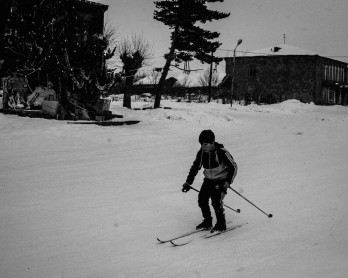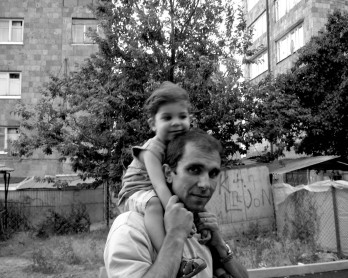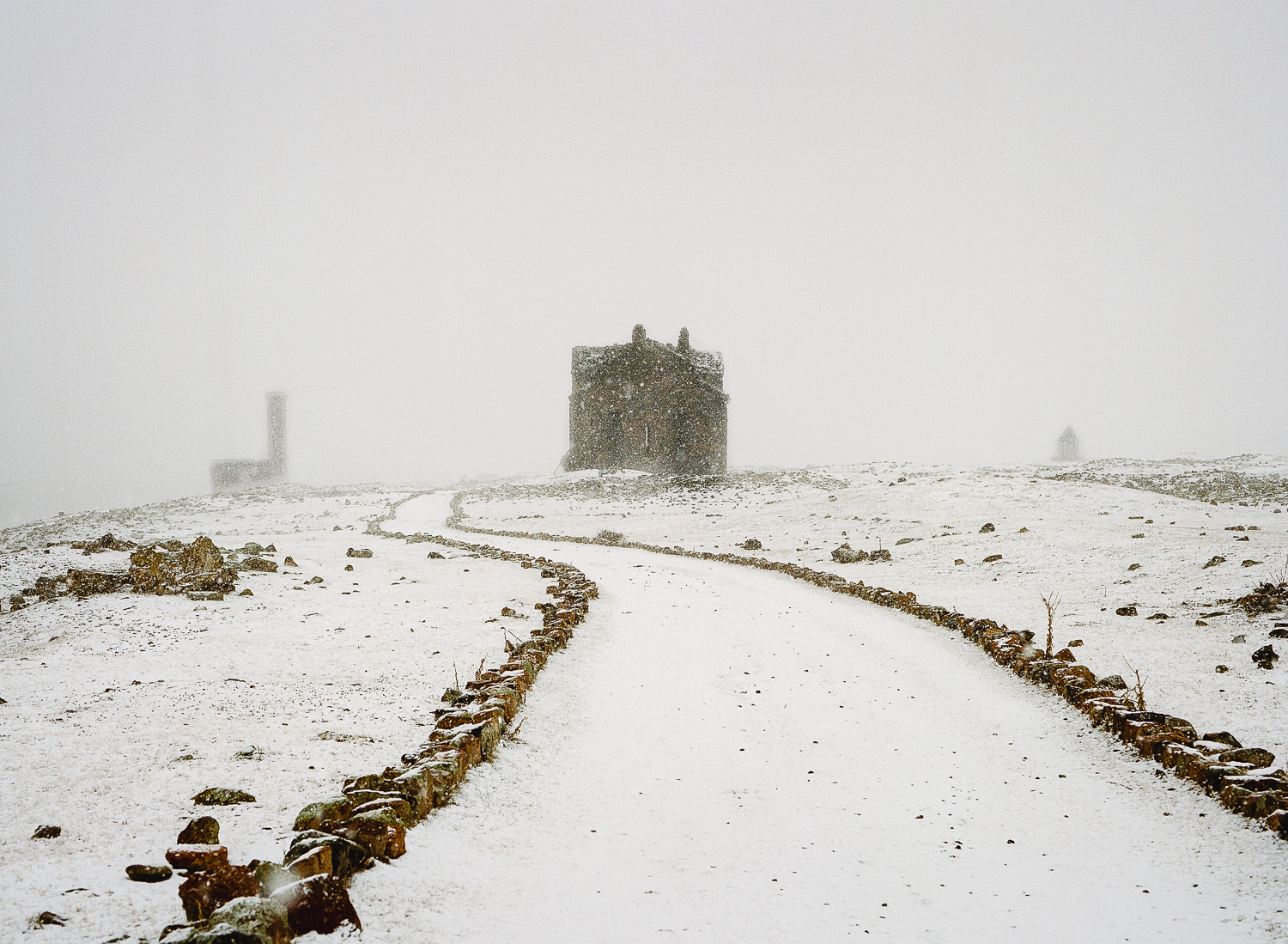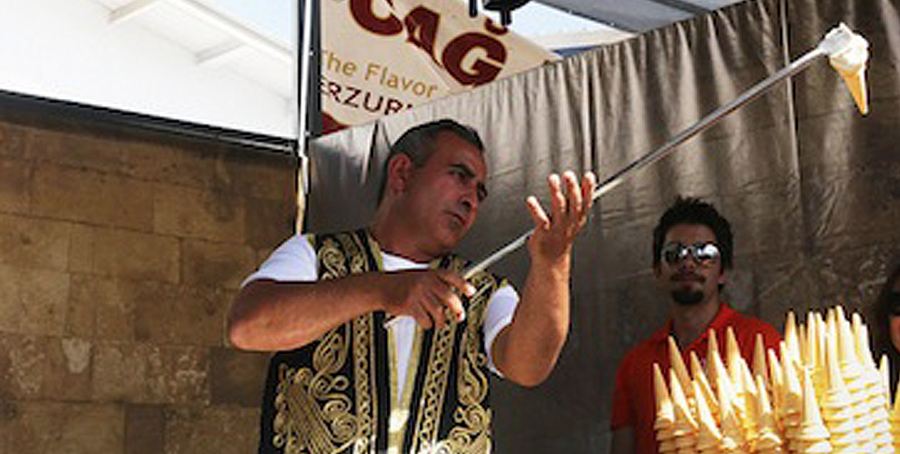How a Punk Rock Drummer Saved the Armenian Chants of Aleppo
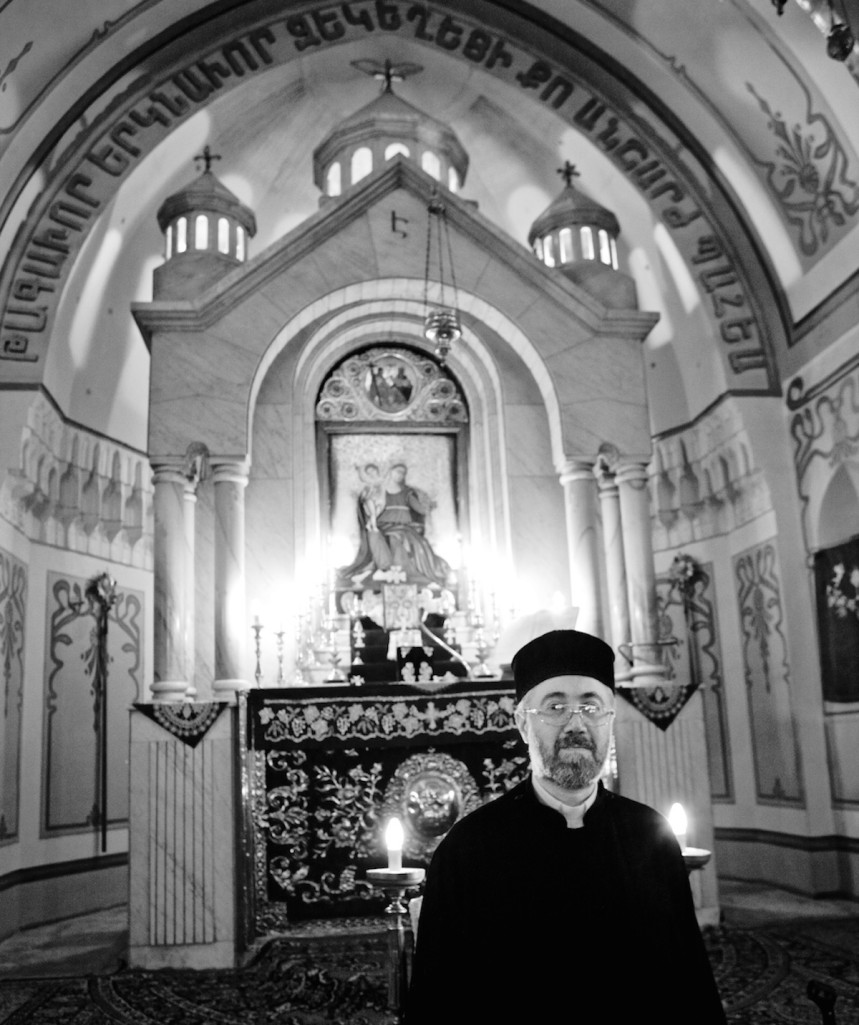
Jason Hamacher’s band had broken up. The tour he was meant to embark on got cancelled. He was angry and frustrated, having reached a point where he was questioning if “rocking out” for the rest of his life was something he really wanted to do. “When faced with any decision, you either do what you know, or you challenge yourself and do something new,” he says. So Hamacher, a drummer in several punk bands including Frodus, and son of a Baptist minister who grew up hanging out in Florida and listening to Metallica, decided to do the most extraordinary thing he could think of: seek out and record the world’s oldest Christian music. Little did he know that his mission, which eventually took him to Syria, would end up saving the music of a now endangered place that has been embroiled in chaos since the outbreak of war in 2011. One of those recordings,”40 Martyrs: Armenian Chanting from Aleppo” featuring The Very Reverend Yeznig Zegchanian was released last week, just a month after the very church the recordings were made in was caught up in the violence, with underground explosions damaging the courtyard of its compound. This grim news echoed across the worldwide Armenian diaspora, for whom the idea of displacement hasn’t always completely dissipated. But for Syrian Armenians, some whose families had lived in the city since the 14th century after the decline of the Armenian Kingdom of Cilicia and some who had found solace in the church after arriving as refugees of the Armenian Genocide in 1915, the 15th century Forty Martyrs Cathedral was one of the last tangible symbols, a place of immense memories that bore witness to the long history, joys and struggles Armenians had had in Aleppo.
“As with all of my work from Syria, all of a sudden, in my head, everything has changed,” he says. “This is no longer,’ hey this is what this place sounds like.’ It turned into a whole different approach, this is now a memorial to something that will never happen again.” Hamacher’s first inkling for the project first began in 2005, when he was driving home one evening and a friend called to tell him about recordings of Serbian chants he had found. But the conservation triggered something unexpected for Hamacher, who instead couldn’t stop talking about how he regretted not traveling to Syria in previous touring stints in the Middle East. “Then the phone disconnected – we just had a bad connection and my head just spun out of control,” he says.
“This is now a memorial to something that will never happen again.”
He remembered reading about ancient Christian music in the book “From the Holy Mountain” by British writer William Dalrymple, and some phone calls and meetings later, Hamacher found himself in Syria as a guest of the Syrian Orthodox Archbishop, who has since been kidnapped by rebels. Staying in the Christian quarter, one of Aleppo’s oldest, Hamacher stumbled upon the Forty Martyrs Cathedral, named after Roman soldiers who were martyred near the city of Sebastia in ancient Armenia, and met Reverend Zegchanian who agreed to chant for him. He sang The Lord’s Prayer, which Hamacher recorded. Five years later, Hamacher was back in Syria, expanding his project-turned multimedia company called Lost Origin Productions to include Sufi, Chaldean and Syrian Orthodox musical traditions when he decided to visit Reverend Zegchanian again. Hamacher had some trouble finding him, but when eventually crossed paths Zegchanian again agreed to chant. The catch? He would do it, but he had to do it now. Hamacher quickly ran back to his hotel room to grab whatever equipment he could. With his portable recording gear and his translator, Jacob Warkez, in tow, he stood inside the empty Forty Martyrs Cathedral as the Reverend began to sing. The results, released 10 years after their initial meeting, are stunning. Encapsulated within the silence and stillness of the church, Zegchanian’s powerful voice is on full display as he sings several pieces of Armenian liturgical music. So soulful are the chants, that you can almost smell the clouds of incense and the burning wax of the familiar lit candles that illuminate all Armenian churches. The essence of Forty Martyrs Armenian Cathedral, built in 1616 thanks to a donation from the merchant Khoja Sanos of Julfa is encapsulated in Zegchanian’s raw, mesmerizing voice.
Յորժամ մտցես ի սուրբ խորանն, Անդ յիշեսցես զմեր ննջեցեալսն:
When you enter into the holy altar, Remember there, those of ours who have fallen asleep.
The stripped down approach was something that Hamacher did intentionally. “One of the things that’s important to me for all these recordings is to expose the tradition in all of its beauty, without anything else to distract it,” he says. Though Hamacher recorded at Forty Martyrs and parted ways with the priest, it wasn’t until he landed at the Zohrab Center, an Armenian cultural center and library in the Diocesan Center in New York City, to do some research that he realized the full extent of what he had recorded and the significance of the church and Aleppo to the narrative of the Armenian Genocide. “It was really humbling, and also really interesting to find out how the location held just as much sentimental or emotional value to the project as the sound itself,” he says. Part of Hamacher’s vision, in addition to exposing the raw musical traditions of the east to the west also included finding the right partners to help him in completing the project – from the liner notes of the digital booklet to calligraphy and translations, his quest to properly honor Armenian musical traditions has led to serendipitous encounters with people who helped him along the way. One of them was Elyse Semerdjian, associate professor of Middle East and Islamic World History at Whitman College in Walla Walla, Washington. Hamacher met her in the African and Middle East Reading Room of the Library of Congress. She was immediately struck by his passion for Aleppo, including the tattoo he had of the Aleppo citadel on his arm, she says. When they struck up a conversation, he realized that Forty Martyrs had been Semerdjian’s family church, where her father was baptized and where funeral services or her aunt were held. He asked her if she would do the liner notes for the CD and she agreed. Hamacher’s work, she says, has evolved into something truly indispensable.
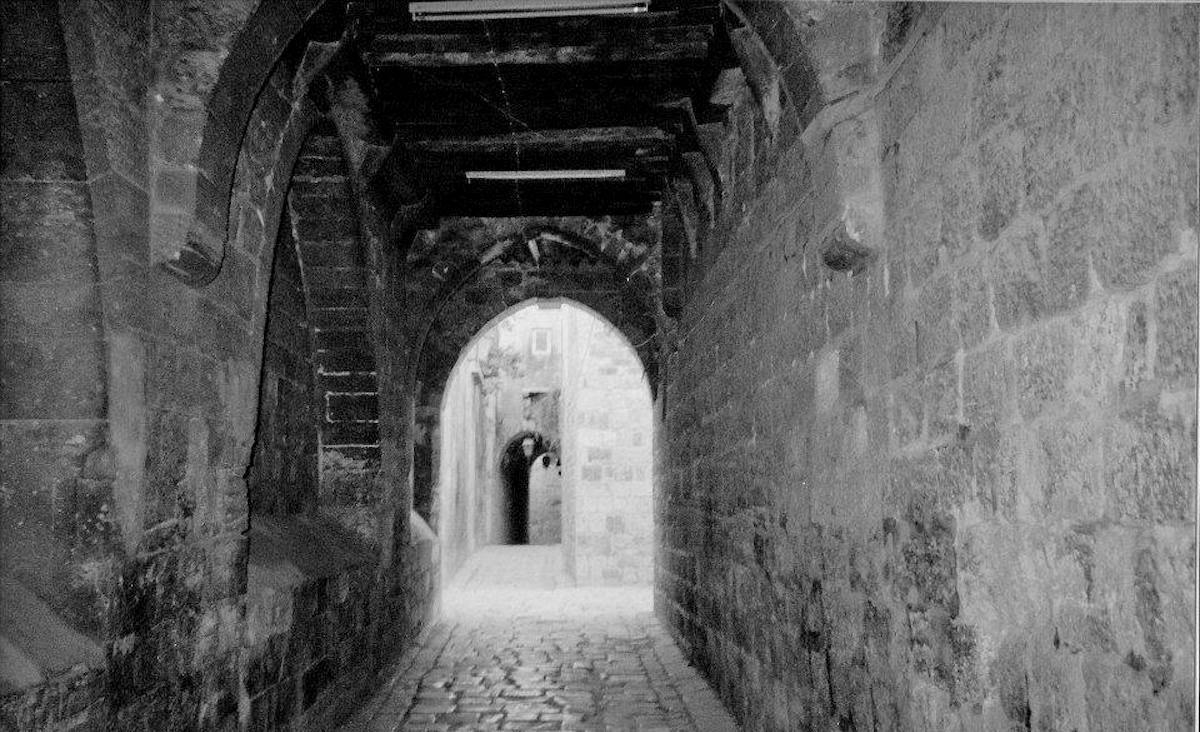
A narrow alley of the historic Jdeydeh neighborhood, where the Forty Martyrs Armenian Cathedral is located. It was in these alleys that Armenian school children, and orphans of the Armenian Genocide before them would play / Photo by Talar Arous
“Jason’s recordings are especially precious now because many of the communities he has documentary are endangered,” she says. “Many historians now believe that the Armenian presence in the city will be severely reduced after the war to the extent that many of the neighborhoods and schools that once existed in the city may not be able to rehabilitate when the war ends. Armenians are dispersing once again all over the world in yet another diaspora that will deal the final blow to the diminishing number of Armenians living in the Middle East.”
We have lived always together, As brothers Armenian to Arab.
We have worked always together, As a Syria without guile.
The day of our separation is near,
O altar of the light of my childhood. We shall ever remember you,
O altar of the hope of my childhood. – Farewell, Aleppo
“In these tragic times when we are witnessing the destruction of Syria, and with it the destruction of the indigenous Christian communities who have called Aleppo home for centuries, I find some comfort in that Jason was able to capture the glory days of this ancient city and to record for posterity the centuries-old soul-stirring chants of the Armenian people and other faith communities,” she says.
Yervant Kutchukian, an interfaith hospital chaplain working in Albany, New York also inadvertently became part of the project when he reached out to Hamacher after hearing him speaking about his album of Sufi chants on NPR. He ended up translating all the chants from Classical Armenian to English, as well as providing Armenian calligraphy for the cover.
“Not only has Jason preserved musical expressions of different Aleppine communities–communities which are in danger of disappearing–but he is also actively working to introduce these communities to the world at large and to draw attention to their plight and tenuous circumstances,” says Kutchukian.
Aleppo’s Armenian community is all but gone, scattered across the world once again, as well as Armenia, a homeland that hasn’t exactly felt like home nor completely filled the space Aleppo left. Hamacher hasn’t been able to track down Zegchanian, whose whereabouts are currently unknown. Calls to the last known number for Zegchanian went unanswered by Ianyan in an effort to reach him. Grégoire Bali, a translator for the United Nations whose family has been tied to Forty Martyrs for at least 10 generations personally knew Zegchanian. He says news of the devastation in Aleppo was heart breaking, especially almost exactly 100 years after the Armenian Genocide. “It’s our anchor in Aleppo,” he says of the church, whose steeple was donated by his father’s great uncle. Bali, whose father is Armenian and mother is Maronite, first met Zegchanian while he was a teenager. “What was different about him was that my household was not entirely Armenian speaking, so he would perform the prayers, even the chanting using Arabic lyrics,” he says. “This was quite special, this was something that made him quite special to us.”
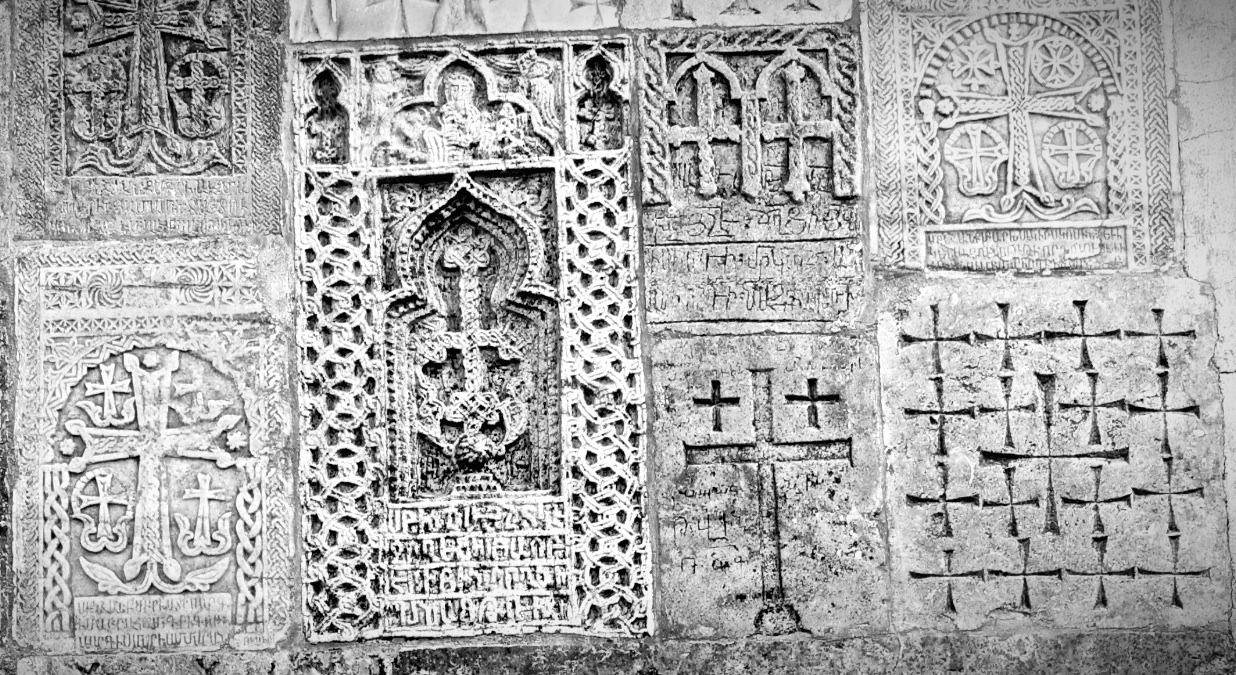
15th century khachkars line the wall of the Forty Martyrs Armenian Cathedral in Aleppo /Photo by Jason Hamacher & Lost Origin Productions
For families who survived the massacres of 1915, the annihilation of the Syrian Armenian community and Western Armenian culture has especially been difficult. “The Syrian civil war is now finishing the job that was begun by the Ottomans in 1915,” says Semerdjian, whose grandfather went from being a used clothing merchant in a refugee camp to an Aleppo businessman who sold rugs and ran a soap factory. “It was in Aleppo that Armenians built a new Armenia, but not as a separate island, but as a part of the fabric of the city,” she says. Though Aleppo and its Armenian community will most likely never be the same again, Hamacher’s work has frozen an important part of Armenian history, a voice that now, on seven solemn, powerful tracks on a single CD, encompasses home.


